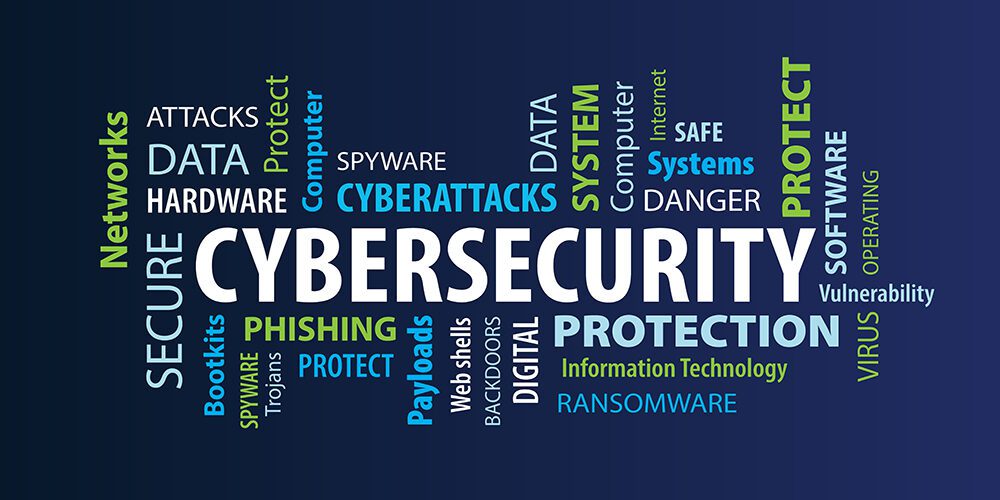
With unprecedented innovations in technology, every aspect of our life is easier and faster and we are all connected inextricably. We live in a world where the focus is firmly on a digital and online future but along with these advances in technology there has been an exponential rise in the incidence of cyber-crimes. From online users to major organizations, many have been the victims of cyber-attacks of different scale and damage. As the threats of these attacks looms large, there is a need for widespread awareness of cyber-crimes and strong cyber security strategies to counter and contain them.
Knowledge is power and learning cyber security terminology and grasping how your digital surroundings work is imperative to stay safe online. Here is a list of key 10 cyber security terms that you must to stay protected from cyber-crimes:
- DDoS Attack
A distributed denial of service (DDoS) attack takes place by employing multiple devices to overwhelm a website or server with so much traffic that it can’t cope and temporarily shuts down. Such attacks also use Internet of Things (IoT) devices apart from others to form a botnet that generates torrential traffic to target the victim’s website. The motive behind these attacks is often financial gain and they can be detrimental for businesses and organizations.
- Rootkit
Malware, short for malicious software, is the generic term used for any type of harmful software that aims to disrupt or damage a computer system. A rootkit is an evolved and sophisticated form of malware that gives a threat actor remote access and control of your computer. It can cause tremendous damage and breach of privacy by uploading and downloading files, extracting documents and injecting more malware into your system. Notoriously difficult to detect and tough to remove, rootkits can be quite insidious.
- Zero-Day Attack
A zero-day attack is a type of cyber-attack that targets the most vulnerable aspect of a software that no one is possibly aware of yet. The ‘zero day’ in the term indicates that the target has zero days, or no time, to fix this flaw and the unknown threat is referred to as a ‘zero-day vulnerability’ or ‘zero-day threat’. What makes these attacks lethal is their ability to get past traditional safety measures and wreak havoc before the target can even understand the extent of the damage.
- Clickjacking
Clickjacking is yet another type of insidious cyber-attack that is also referred to as “UI redress attack”. The tactic employed by the attacker here is to trick the user into clicking on elements that give them access to user accounts and sensitive information. Clickjacking usually depends on social engineering techniques like phishing to get users to click on harmful links or download dangerous files.
- Black Hat Hackers
These hackers are also called “crackers,” and can be an individual or group that target network vulnerabilities to gain illegal access to computers and other devices. The modus operandi of black hat hackers is to exploit weaknesses in your IT infrastructure to gain access to your systems and data. These cybercriminals misuse their technical knowledge to steal private user information or commit cyber frauds for their financial gains.
- Deepfake
These cyber- attacks were in the news in 2023 for creating fake but highly credible images and videos of celebrities to discredit and malign them. They tap into artificial intelligence known as deep learning to manipulate images, videos and audio. Deepfakes pose a huge threat to companies and society at large as they can be misused to create a false identity and spread false information and propaganda. In the face of this danger, tech firms are developing detection systems that can flag up fakes as and when they appear. Another possible defence mechanism is creating and maintaining a blockchain online ledger system that holds a record of videos, pictures and audio to check their origin.
- Man-In-The-Middle Attack (MITM)
In this cyber-attack, the perpetrator intercepts and intervenes in the communication between two parties without their knowledge or permission. This intervention gives the attacker the power to alter the information and create confusion and even crisis. This kind of eavesdropping is common between people, clients and servers, web service connections and Wi-Fi networks. Emails are also vulnerable to MITM attacks as they don’t use encryption and an attacker can easily intercept and send fake emails by using the sender’s login credentials.
- Multifactor Authentication
To provide protection against myriad cyber-attacks, multifactor authentication (MFA) uses multiple methods of authentication to verify a user’s identity for a login or other transaction. By providing a multi-layer defence, MFA creates barriers for any unauthorized person looking to access a device, network or database. This method works on the principle that even if one factor is compromised, the attacker has more obstacles to overcome to reach the target.
- Endpoint Detection and Response (EDR)
Endpoint Detection and Response (EDR), also known as endpoint threat detection and response (ETDR) encompasses tools used to protect computer endpoints from any potential threats. EDR platforms employ networking and software instruments to detect suspicious endpoint activities, identify potential threats and respond to them in real time. EDR is more sophisticated and advanced than traditional antivirus software and plays a critical role in detecting and mitigating advanced threats.
- Zero Trust
Zero Trust is a security framework that works on the presumption of no trust within or outside an organization’s network. The guiding principle of this model is “never trust, always verify” and considers every device and user, inside and outside the network as a potential threat. This approach involves strict access controls, multi-layered authentication and continuous monitoring and is employed by several organizations to protect themselves against advanced cyber-threats and risks.
Cyber Resilience is the Future
In the face of sophisticated threats and attackers, cyber security and cyber resilience will become increasingly important in 2024 and beyond. With cyber security, the focus remains on preventing attacks but even the most advanced protection systems are not foolproof. Organizations will have to exhibit greater cyber resilience in the future by designing measures that guarantee continuity of operations even in the face of a cyber- attack. In 2024, they must develop the ability to recover with agility while ensuring minimum data loss and downtime.
Want to know how to improve your organization’s cyber-resilience? Head on over to our next blog: How To Improve your Organization’s Cyber-Resiliency
